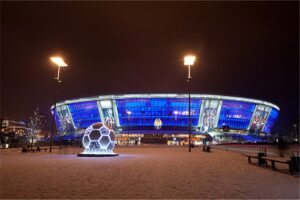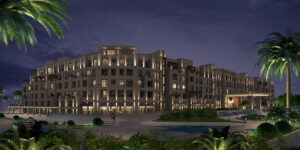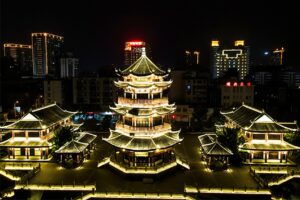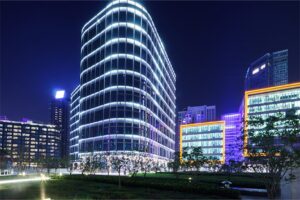First off, let’s face it – lighting a building isn’t just about functional illumination. It’s about setting the mood, highlighting architectural details, and most importantly, making a statement. This task can seem daunting, especially when you’re faced with a plethora of options in the LED lighting market. But don’t worry, I’m here to guide you through the process of brilliantly illuminating your building with 15+years industry working experience.
Getting the lighting just right can truly transform your building’s appearance and create a captivating nighttime aesthetic. A well-lit building not only promotes safety and visibility but can also increase the structure’s aesthetic appeal. From spotlights that emphasize unique architectural features to mood lighting that sets a particular atmosphere, the options are virtually limitless.

Stay with me here, we’re just getting to crucial part in the following.
How Can LED Lights Make a Difference?
Now, let’s talk about the ‘LED’ in LED lighting. Light Emitting Diodes (LEDs) are not just about giving you light; they’re about giving you options. The ability to play with light intensity and color temperature can make all the difference in setting the mood. Cool light for a modern, sleek look or warm light for a cozy, inviting feel – it’s your call!
Besides, LED lights offer longevity and energy efficiency like no other. Imagine cutting down your energy bills while enjoying superior lighting quality – that’s the magic of LEDs! At solutionproled, we understand the value LEDs bring to your project and offer an extensive range of high-quality LED solutions, tailor-made for your specific requirements.

What Are The Key Elements To Consider In Building Lighting?
Before we dive headfirst into the sea of LED lights, it’s crucial to understand the core elements of building lighting. Your building’s size, architectural style, and lighting design are just a few aspects to consider. Let’s not forget about energy efficiency and sustainability, two factors that are increasingly important in today’s world. Sustainability is no longer a buzzword; it’s a necessity. Eco-friendly lighting designs can significantly reduce your carbon footprint. Incorporating LEDs, optimizing the use of natural light, and utilizing light control systems are excellent ways to make your lighting more sustainable. Let’s light up our buildings with solutionproled.
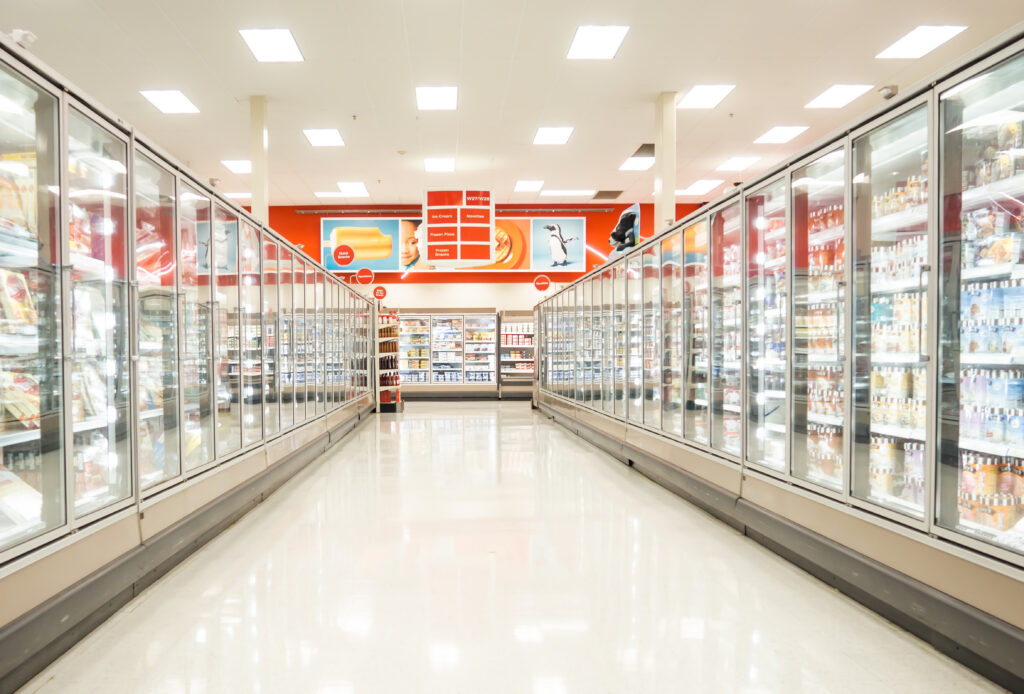
How Can You Achieve a Functional Yet Aesthetic Lighting Design?
Moving onto the meat of our discussion, achieving a blend of functionality and aesthetics in your lighting design requires some careful thought. A commercial building will have different lighting needs compared to a residential property or an art installation. The key is to balance visibility and ambiance in a way that complements your building’s lighting design and function.
Take facade lighting, for example. You might think, “Well, facade lighting, that’s easy! Just light up the exterior walls, right?” But it’s not that simple. There’s an art to it – creating depth, emphasizing texture, and casting shadows for a dramatic effect. A uniform wall wash might not do your architecture justice. Maybe grazing light to highlight intricate textures is what you need, or perhaps recessed fixtures for a minimalist, modern vibe.
To achieve the balance of visibility and ambiance for your building, you need to clear the effects that each type of lights can do. Then you could know how to choose lighting fixtures to achieve a functional and aesthetic lighting design. The following are the main outdoor lighting fixtures’ basic performance and applications.
LED floodlights (spotlights)
LED floodlights (spotlights) are a type of lighting fixture that projects light onto a specific area. The illuminance of these lights is higher than the surrounding environment, and they can be adjusted to aim in a certain direction by adjusting the installation angle. Additionally, LED floodlights are not affected by weather conditions. The appearance of LED floodlights is shown in following picture. They can be installed individually or in multiple units for concentrated installation and combination use. Some high-pole lighting fixtures also utilize LED floodlights. LED floodlights are suitable for areas such as factory premises, sports arenas, docks, billboards, buildings, lawns, and horticultural design illumination projects that require both spotlighting and decorative lighting.
High-voltage linear driverless light sources can directly use 220V/110V voltage without the need for an external LED driver. They offer high cost-effectiveness and excellent performance.

LED wall washer
LED wall washers are mostly rectangular in shape and are mainly used for architectural decorative lighting or outlining the contours of large buildings to achieve a wall washing effect. The technical parameters of LED wall washers are generally similar to those of LED floodlights. Currently, LED wall washers commonly use breathers to balance the pressure inside and outside the luminaire and solve waterproofing issues. Common power specifications for LED wall washers include 18W, 24W, 36W, 48W, etc., with operating voltages such as AC 220V, AC 110V DC 24V, DC12V. They emit colors such as red, yellow, blue, green, white, warm white amber and RGB.
LED wall washers adopt special anti-aging thermal conductive silicone gel for sealing treatment. Professional installation brackets allow flexible adjustment of the projection angle and lateral adjustment while providing convenient and quick installation. Internal control LED wall washers do not require external controllers as they can have multiple built-in change modes. External control LED Wall Washers require an external controller to achieve color changes

LED Stadium Lights
LED stadium lights have power options of 200W, 400W, 600W, 800W, and 1000W. The standard beam angles are 60° and 20°, with the XBD 2525 as the light source. Outdoor lighting fixtures require the installation of waterproof breathers for LED lights as accessories. The waterproof breather allows continuous ventilation to maintain pressure balance on both sides of the housing while effectively protecting it from negative effects caused by temperature changes. Additionally, the waterproof breathable material prevents water, dust, insects, and other contaminants from entering the housing.
LED stadium lights are mainly used for lighting in football fields, volleyball courts, badminton halls, table tennis halls, basketball courts and other locations.
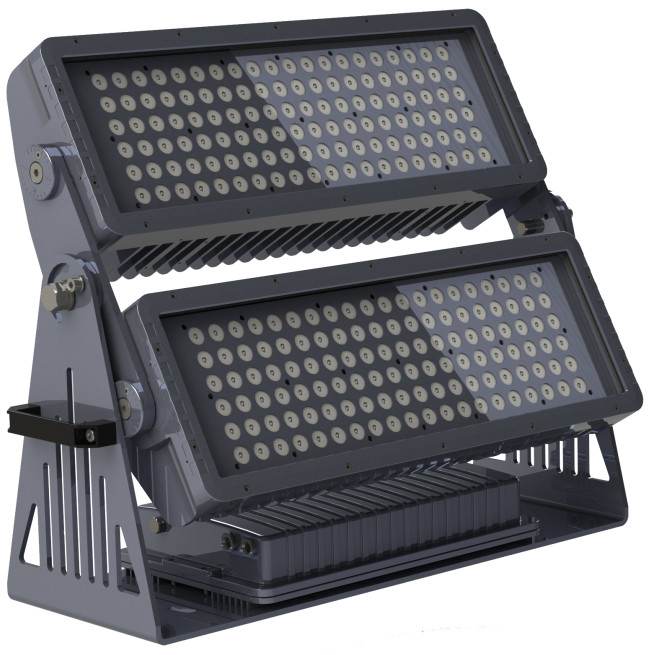
1.The quality of football field lighting depends mainly on illuminance level,
uniformity of illuminance distribution and glare control.
Basketball court lighting needs to meet not only game requirements but also
requirements for color temperature, illuminance level, and uniformity.
2. In badminton hall lighting design,
the illumination must enable athletes to accurately judge ball trajectory,
heights,
and landing points while preventing glare.
3. Tennis court lighting can use white LED light sources.
The luminaires should provide wide coverage without producing glare.
Illuminance should be uniform with reasonable distribution patterns.
LED Pixel Light
LED Pixel light source uses LEDs as the light source, with various colors such as yellow, green, red, blue, purple, cyan-blue, white, full-color, etc., and can be designed in various shapes such as rectangular and circular. The LED microcomputer chip can control multiple synchronized monochrome changes through programming and can also achieve synchronized colorful gradients, jumps, scans, flows, and full-color variations. Multiple LED point light sources can be combined to form a dot matrix screen. LED pixel light sources are ideal decorations for building facades, bridge outlines, hotels, billboards, curtain walls,
and night scene lighting.
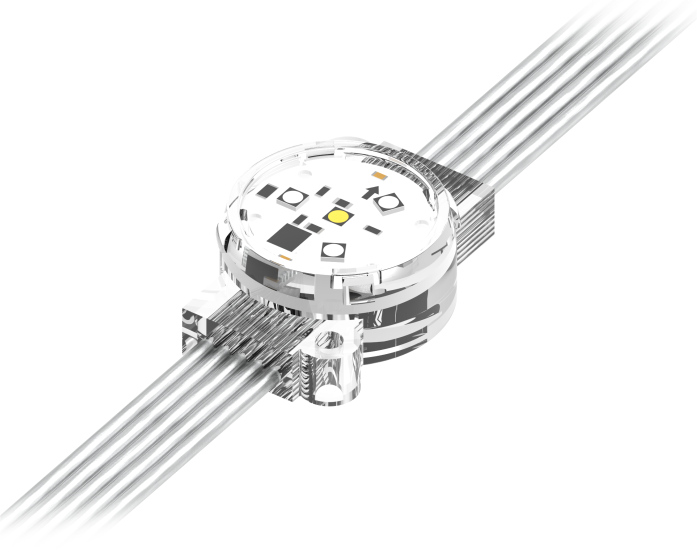
LED Underwater Light
The design of LED underwater lights is similar to that of Ingournd lights. They are installed underwater and need to withstand certain pressure. The housing and panel of LED underwater lights are made of stainless steel, while other components include tempered glass, waterproof connectors, silicone rubber sealing rings, PCBs, LED lenses, and water-sealing adhesive. The performance of LED lights in terms of waterproofing, dustproofing, leakage protection, corrosion resistance should meet the relevant national standards.
LED underwater lights can achieve various color-changing effects when combined with the DMX512 system. The specifications of LED underwater lights are generally Φ80~160mm in diameter and 90~190mm in height. The working voltage of LED underwater lights is a safe voltage for human beings, such as AC/DC12V, AC/DC24V, etc., and they are powered by low-voltage DC power supply, ensuring safety and reliability. National standards clearly stipulate that the underwater lighting fixtures in places such as swimming pools and fountains should be equipped with electric shock protection features. The working voltage of both external and internal circuits should not exceed 12V.

LED Inground Light
The body of the LED inground light is made of die-cast or stainless steel, and the cover material is stainless steel. Other components include silicone sealing rings, high-strength tempered glass, waterproof connectors, silicone rubber sealing rings, PCBs, LEDs or lenses, and waterproof sealants. The screws of the LED underground light are all made of stainless steel, and the protection level of the luminaire should reach IP67. When installing LED underground lights, plastic embedded parts can be chosen for easy installation and maintenance of the luminaire.
LED inground lights come in various colors and can achieve effects such as red, yellow, blue, green, white, rainbow jumping, and gradient. LED underground lights have the characteristics of high brightness, low energy consumption, soft light, and no glare. Its efficiency can reach 85%.

The input voltage of high-power LED underground lights is AC220V or DC24V. The light source can use standard low-power (ф5 or SMD2835,SMD5730,SMD5630) light sources and high-power 1W light sources or COB sources. This kind of lighting fixture is widely used for illumination in green belts, parks, lawns, courtyards, pedestrian streets, parking lots, squares, and other places.
The glass of LED underground lights must be tempered to remove stress. Its strength should be able to withstand an impact force of 2-4N/cm with a thickness of 5-10mm.The hardness of the rubber ring should be around 35H.It should be a U-shaped rubber ring because this type of rubber ring can directly fit on the glass. The waterproof lens must have a certain distance from the tempered glass to avoid affecting the quality of light emission.
LED Wall Light
The housing of the LED wall light is made of high-grade oxidized spray aluminum profile, with integrated extrusion processing technology and tempered glass cover. The interior of the luminaire has a high-quality aluminum heat sink, ensuring good heat dissipation and effectively reducing light decay during LED usage.
Outdoor LED up-down wall lights are mainly used for outdoor landscape lighting and illumination in places such as walls, columns, corridors, hotel exteriors, etc. The shape of outdoor LED up-down wall lights is shown in the following picture. Various lamps adopt advanced rolling techniques to ensure good overall integrity, reliable sealing, and IP65 protection level.
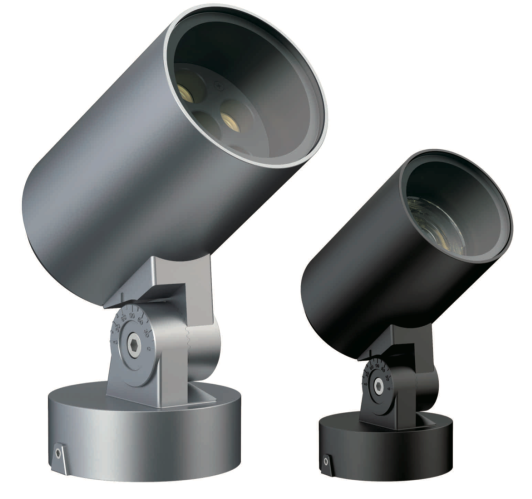
LED Street Light
Currently, most of the lighting fixtures used for road lighting are LED street lights. In fact, LED street lights are now combined with intelligent LED street light control systems. Lighting fixtures should use light energy reasonably to prevent glare. The light emitted by LED street lights should be projected along the desired angle and form a specified pattern on the road surface. The distribution of light from these fixtures is uniform, which can provide greater brightness on the road while minimizing glare. To reduce glare, different lighting distribution methods can be used above the maximum light intensity for control.
The lighting quality of road illumination is mainly manifested as follows:
(1) Brightness level. The average brightness of the road has different requirements according to the road grade. Generally, expressways and main roads with asphalt pavement need to meet a brightness requirement of 2cd/㎡², while secondary roads, auxiliary roads, or residential roads have relatively lower requirements which can be referred to the current road lighting design specifications.
(2) Average illuminance. Average illuminance refers to the average value of all illuminances on the road surface and is used as a unit for measuring lighting intensity.
(3) Glare. Road lighting should strive to limit the discomfort caused by glare within a certain rang.
(4) Visual guidance. Road lighting should enable drivers to immediately recognize the direction of this road from a certain distance away, especially in identifying their own intended route’s direction.

Conclusion
So, ready to light up your building? Remember, it’s about creating harmony between function, aesthetics, and sustainability. Whether you’re a project manager or an architect, Solutionproled is here to partner with you and deliver superior LED lighting solutions that contribute to your project’s success.

